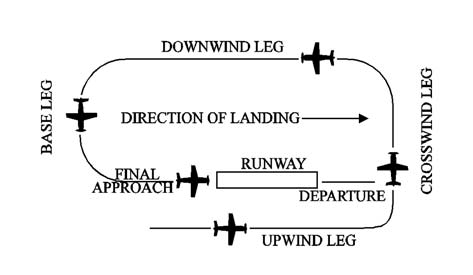This is one of those frequently misunderstood and repeated mistakes that many pilots (and a lot of CFIs) continue to perpetuate which hurts credibility and could cause traffic conflicts since the ‘Departure’ leg of a pattern is not in the same location as the ‘Upwind’ leg.
Many times when I’m instructing at un-towered airports I will hear a radio call from an airplane that just took off saying something along the lines of “Bonanza N123AB upwind runway three four.”
I’ve even had tower controllers tell me to “continue on the upwind” or when coming in to land on a specific runway they will point out a departing airplane “climbing out on the upwind.”
It seems like a ‘no big deal’ sort of an issue until you look closely at the Aeronautical Information Manual (AIM) chapter 4-3-2 and see the diagram labelling the components of a traffic pattern.

Also in AIM 4-3-2 is the definition of the Upwind leg: “A flight path parallel to the landing runway in the direction of landing.” In order to be parallel to the runway you must be offset slightly and tracking alongside it just as depicted in the diagram. This is clearly different from the Departure leg which is defined as “The flight path which begins after takeoff and continues straight ahead along the extended runway centerline.“
So why the distinction and why does it matter?
The best example is one I can pull from experience when myself and a student were turning base to final at an un-towered airport and another airplane, not on the radio and not looking out for airplanes in the pattern, took the active runway in front of us. We performed a go-around and shifted to the Upwind. Flying the Upwind allowed us to track along the runway, and since we were offset, maintain a constant visual of the departing airplane for separation to ensure our safety. When we made our radio calls telling other traffic on CTAF that we were on the Upwind (and why were were there) it is important for everyone listening to know where that is for proper situational awareness.
Experienced pilots when landing airplanes talk about the runway centerline being “where the professionals live” and the same is true for using correct terminology when talking to others. None of us get it 100% correct 100% of the time, but it is something we can work on to demonstrate our professionalism and help others understand where we are and what we are doing so we all fly safe.
